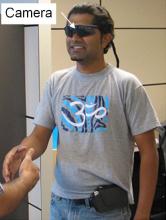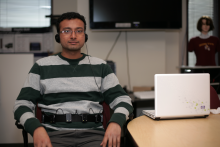
Dr. Troy L. McDaniel
Position
Department
Joined CUbiC
Contact
History
Former ASU student.
Research Profile
My research interests span the areas of haptics, human-computer interaction and assistive/rehabilitative technology. In particular, I explore the sense of touch as a receptive channel in the context of information delivery via electronic devices and displays. My research focus targets both (1) applied and (2) core research contributions within haptics: (1) Assistive haptics technologies for individuals who are blind such as social interaction assistants, and rehabilitative haptics technologies for individuals with motor impairments such as stroke; and (2) Psychophysics, multimodal displays, and device design. I completed my dissertation, "Somatic ABC's: A Theoretical Framework for Designing, Developing and Evaluating the Building Blocks of Touch-Based Information Delivery", in 2012 under the guidance of Dr. Sethuraman Panchanathan.
Publications
Projects
Effective communication requires a shared context. In face-to-face interactions, parts of this shared context are the number and location of people, their facial expression, head pose, eye contact, and movements of each person engaged in a conversation. Faces serve an…
In literature, such as novels, an elaborate account of a scene, in terms of the location, ambience, and presence of characters, is presented prior or during the conversation of those characters in the scene. In movies, similar information is portrayed, but through the…





